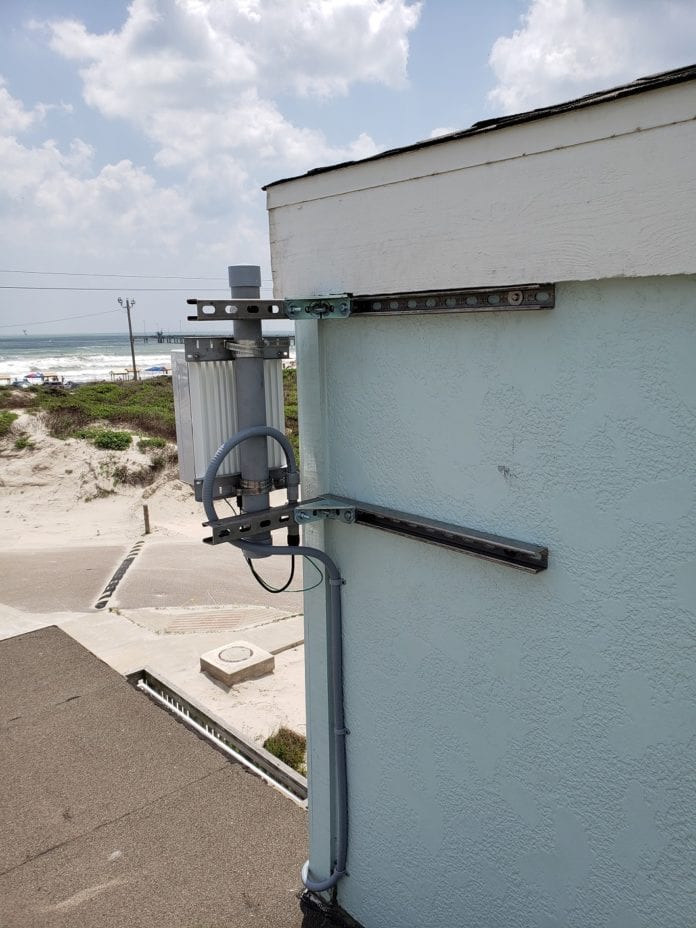A little more than a year ago, Federated Wireless announced that the network of sensors that it had built out along the nation’s coastlines was ready to commercially support operations in the Citizens Broadband Radio Service shared spectrum at 3.5 GHz.
That Environmental Sensing Capability (ESC) network is critical to being able to support CBRS usage along the nation’s Atlantic, Pacific and Gulf coasts, because it enables the protection of ship-mounted naval radar incumbents. Federated was the first to put an ESC in operation, and Federated CTO Kurt Schaubach noted that the ESC capability enables the company to assign manage the full 150 megahertz of the CBRS band in most locations across the country, including the often highly-populated coastal protection zones. “Without an ESC, you can’t effectively provide full access to PALs across all of the U.S. for the users, so that’s why we think it’s been very important for us to make investments in the network to jumpstart deploying and operating,” he said. (CBRS Priority Access Licenses, or PALs, are in the process of being auctioned by the Federal Communications Commission.) Federated’s ESC has about 220 sensors in operation.
“These geographies are quite large, they go inland several hundred miles,” Schaubach went on. “There’s a lot of population that sits underneath those areas, [where] the ESC becomes the most critical component to effective spectrum access and use.” In some areas of the U.S. with incumbent fixed satellite ground stations or grandfathered WISP operations, there are only 100 megahertz available due to incumbent protections. But, Schaubach says, over time more of the spectrum will become available as the GWBLs (Grandfathered Wireless Broadband Licensees) such as WISPs transition their operations from Part 90 to Part 96, and dynamic protections replace static protections for the fixed satellite stations.
According to Federated execs, the company has a dominant share of the CBRS small cells that have already been deployed under the General Authorized Access — of the more than 25,000 CBRS active sites, Federated said its systems are managing around 15,000 of them. The ESC network is part of what has driven the company’s market position, Schaubach said.
“When we designed the network, we took very much an operational mindset to it, in terms of making sure that we had redundant coverage and other redundancies — like the backhaul and battery backup,” he went on. “The key thing there is that we didn’t want the impact of a site going offline — which happens, of course, that happens in any network — where you might lose backhaul, a weather event like a hurricane or other storm might take a site offline. We didn’t want that to result in a lack of access to spectrum for our customers. Without redundancy, the network needs to fall back into a failsafe mode … to say that if I can’t fully sense or monitor the presence of a navy radar, I have to assume that none of this spectrum is available for me to assign for customers. So basically, if you lose the capability to monitor you lose the ability to assign a hundred megahertz of spectrum just like that. So we designed the network to make sure that we had multiple points of redundancy in it, so that a minor outage here or there would not have an impact on the commercial use by our customers.” Today, he said, the ESC network is running at more than five-9s availability.
Federated approached its ESC build-out to make the best use of site locations and other capabilities available to it. “We did a lot of innovative things in terms of how we designed the ESC, to make it easy and flexible to install in a lot of diverse locations, which was important for achieving that nationwide network capability,” Schaubach said. Federated also had to harden and integrate sites into a holistic network, and by late last year, the company had gone through and done a lot of optimization work to improve the ESC’s coverage and tune its performance. The rapid ramp-up of CBRS site deployment since the FCC approved full commercial deployment has made it a challenge to stay ahead of customer needs, Schaubach said, so Federated is continuing to pour investments in as it scales. The company is already working on a next-generation ESC sensor to further improve performance, he added.
“Over the course of last year, we’ve learned a lot of things. No spectrum is perfectly clean or green-field, there were a lot of issues, rogue interference sources and things we needed to clean up,” Schaubach said. Those quirks are the same thing that every network operator goes through, as they bring a new network online, he was quick to add. “We were the first ones to find these problems, and went out and solved a lot of them. And we will continue, I think, to find stuff along the way, but we’ve done a tremendous amount of work to do clean-up already.”
He gave one example of a site that shared a location with small, beachside lobster shack eatery in Maine. The site was ideal for the ESC because it was right on the water — perfect for monitoring the presence of ship-borne radars. “But it turns out that every time that they turned on the boilers [for preparing lobster], the generator that was used to run the boilers for the lobster shack created lots of RFI that was interfering with our ESC,” Schaubach said. “So we had to work with the owner of the lobster shake to mitigate some of those impacts, eliminate the interference.
“It’s these sort of real-world practical experiences that are really irreplaceable,” he continued. “Without having had that year to really work on the network to continue to enhance it, I truly don’t think it would be in the state it is today, supporting customers the way it is today.”

